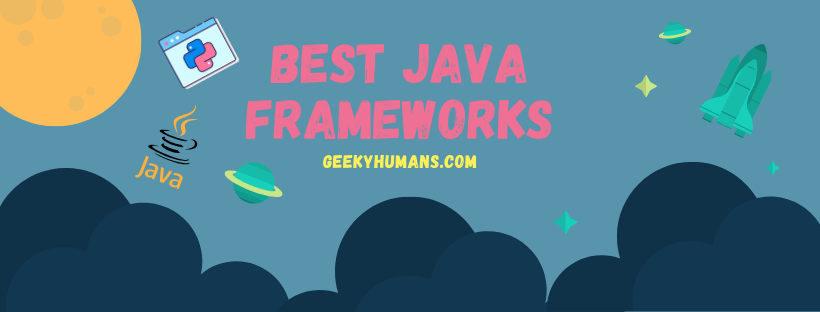Java frameworks can be both front-end and back-end. Back-end Java frameworks manage the server-side functions, whereas the front-end manages how the front-end looks and functions. Several Java frameworks are popular, so here we have collected the top Java frameworks you should consider. Our best Java frameworks list takes into consideration how Java has evolved in the past few years. Following are some of the most popular Java Frameworks:
Blade
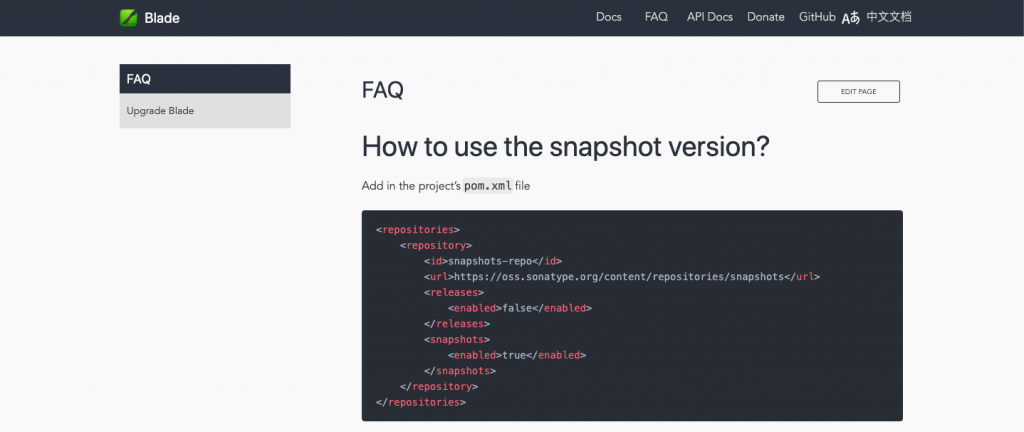
The blade is a simple and light-weighted and high-performance Java framework used for providing a full-stack web framework. It is a light-weighted MVC Framework that offers a RESTful routing interface, making the web API cleaner and much easier to learn and also helps in synchronizing data with the website.
This framework is based on Java 8, and the webserver and template engine is built into the framework, too. It has a minimal impression it means the source code is less than 501 kb in total.
Advantages of Brade areas follows:
- It provides a lightweight container that can be triggered without using a web server or application server software.
- Blade supports JDBC that improves productivity and reduces the error.
- Targets to make J2EE development easier to use.
- Blade supports both XML and annotation-based configuration.
- It provides backward compatibility and testability of the code.
Dropwizard
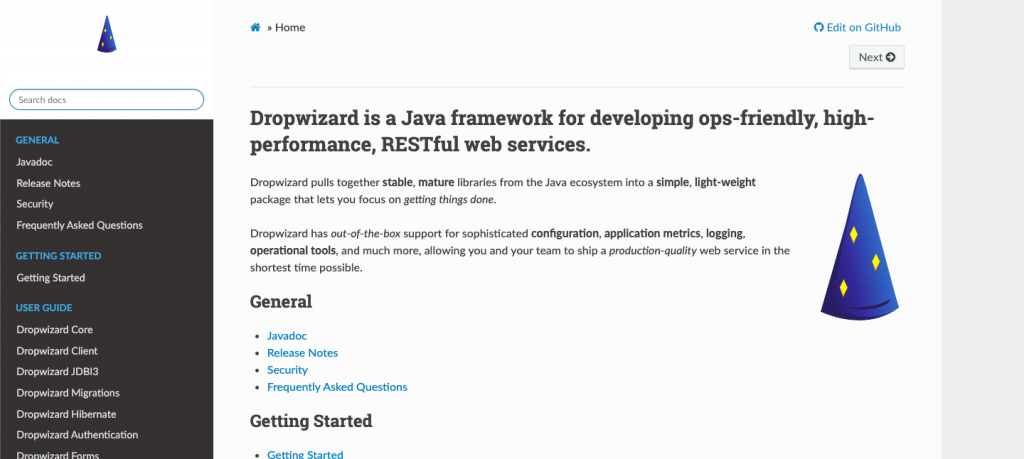
Dropwizard is a framework containing a set of tools for building RESTful web services. The key goal is to supply reliable implementations of everything that a web application needs. With Dropwizard, the packages of your application can be easily deployed in a production environment as a standalone service.
The biggest advantage of this framework is probably that it offers extremely fast bootstrap of your project. To sum it up, Dropwizard is easy to set up, easy to develop, and yet a robust and high-performance REST framework.
Advantages of Dropwizard are as follows:
- One can easily perform rapid prototyping.
- It develops high-performance RESTful web services.
- It also supports many open source and independent libraries.
- Quick Project Bootstrap.
- Increase in productivity.
Grails

Grails is a java framework that uses the Groovy programming language. It enables developers to create web applications using Groovy programming language. Plus, it is open-source under the Apache 2 License project.
Groovy is aimed to improve developers‘ productivity and uses an object-oriented language. It is a dynamic language but still lets developers use static-typing and static compilation capabilities.
As a Java developer, you will find yourself at home as it uses the same syntax that of Java. Also, the syntax is compatible with Java and can be compiled to JVM (Java Virtual Machine) bytecode. It is built on top of the Spring Boot and borrows the time-saving features of Spring Boot.
Advantages of Grails are as follows:
- It utilizes Groovy as its coding standard and since Groovy is the same as Java, programmers think it is easier, to begin with, Grails.
- Easy to use the object mapping feature.
- It promotes the reuse of code between different Grails application by modularizing the application in the form of plugins.
- It provides flexible profiles.
Google Web Toolkit (GWT)

GWT, or the Google Web Toolkit, is a brilliant web framework developed by Google. It allows you to create a rich Java web application by providing powerful user interface capabilities. GWT is pronounced as “gwit,”. It is a stable and well-maintained Java framework.
There are lots of plugins, tools, examples available from Google, which can help you to learn GWT quickly.
Though the learning curve is a bit more if you are coming from Spring or Struts background. This framework can be used to developer browser-independent AJAX-based applications.
Advantages of Google Web Toolkit are as follows:
- It supports reusability for common web development tasks.
- Google APIs can be used in GWT applications.
- Struts offer internationalization, cross-browser portability, UI abstraction, bookmarking, and history management.
Hibernate
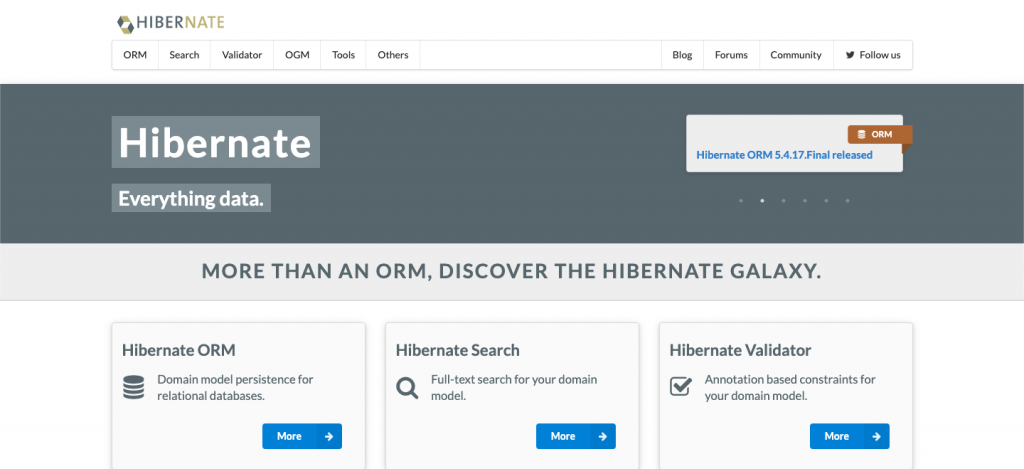
Hibernate is an object-relational mapping (ORM) Java framework mainly used for dealing with databases. Hibernate easily communicates with any database and is incredibly convenient when working with multiple databases.
Hibernate simplifies application development and the way it interacts with the database. It is perfect for OOP-type projects that require high productivity and portability at the same time.
Advantages of Hibernate are as follows:
- Portability, productivity, maintainability.
- Free and open-source framework.
- It removes a lot of repetitive code from the JDBC API.
- It allows you to develop persistent classes following the object-oriented idiom.
JHipster

JHipster is a newer Java framework (introduced in 2013) that brings the Spring Boot and the two most-widely used front-end frameworks (Angular and React) together, in one handy application generator. With JHipster, one can quickly generate modern Java-based web applications and microservices.
Advantages of JHipster are as follows:
- It is an open-source framework.
- It supports React, Vue, Angular for the frontend.
- Jhipster uses TypeScript for each frontend framework.
- It uses Spring Boot 2.1 so we can develop our application in Java 11+
- Jhipster provides out-of-the-box user management including email verification and password reset.
Spring framework

Spring Framework is a powerful light-weighted application development framework used for Enterprise Java (JEE).
The core features of the Spring Framework can be used in building any Java application. It is described as a complete modular framework. This framework can be used for all layer implementations of a real-time application.
It can also be used for the development of a specific layer of a real-time application unlike the other frameworks, but with Spring we can develop all layers.
Spring and all the modules such as Spring MVC, Spring Core, Spring Security, Spring ORM, etc are used in enterprise applications.
Advantages of Spring are as follows:
- Spring provides a lightweight container that can be triggered without using a web server or application server software.
- It supports JDBC that improves productivity and reduces the error.
- Spring targets to make J2EE development easier to use.
- It supports both XML and annotation-based configuration.
- It provides backward compatibility and testability of the code.
PrimeFaces

PrimeFaces is a well-known Java Framework that provides the JSF component to develop a rich web application. It delivers a rich set of components for Java Server Faces 2.0, such as HtmlEditor, AutoComplete, Dialog, etc.
It also has built-in support for Ajax-based upon JSF 2.0 Ajax APIs. PrimeFaces also has excellent community support, which is key to the success of any open-source framework.
Advantages of PrimeFaces are as follows:
- It is a lightweight library.
- PrimeFaces community continuously helps the development of PrimeFaces by providing feedback, new ideas, bug reports, and patches.
- It is very easy to use.
Spark
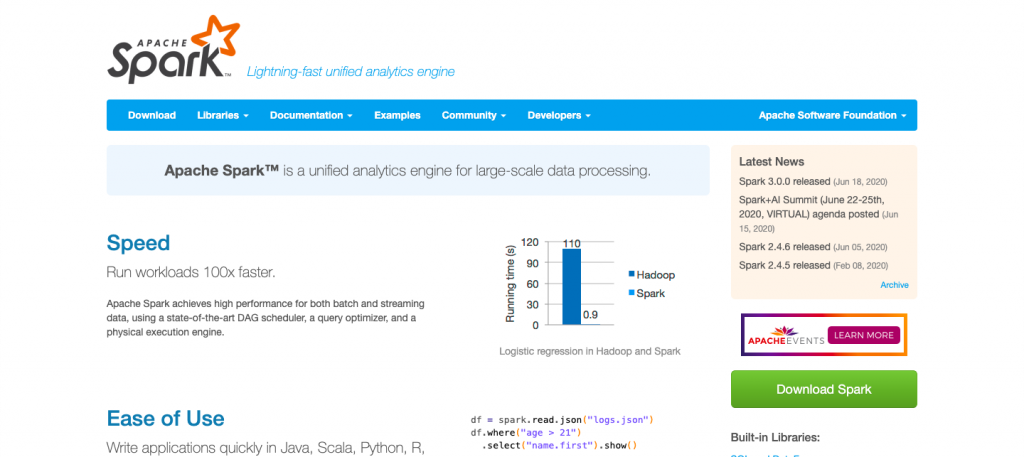
Another offering from Apache, Spark has become one of the fastest-growing key cluster computing frameworks in the world. The main concern with Hadoop was its ability to maintain speed in computing large datasets, which is when Spark was introduced.
Spark starts evaluating only when it is absolutely needed, which plays an important role in contributing to its speed. Thanks to its support for multiple languages such as R, Scala, and Java, it can be easily deployed in various technologies such as machine learning, data streaming, and graph processing.
Advantages of Spark are as follows:
- Provides highly reliable fast in-memory computation.
- Efficient in interactive queries and iterative algorithms.
- Fault tolerance capabilities because of immutable primary abstraction named RDD.
- Inbuilt machine learning libraries.
Struts
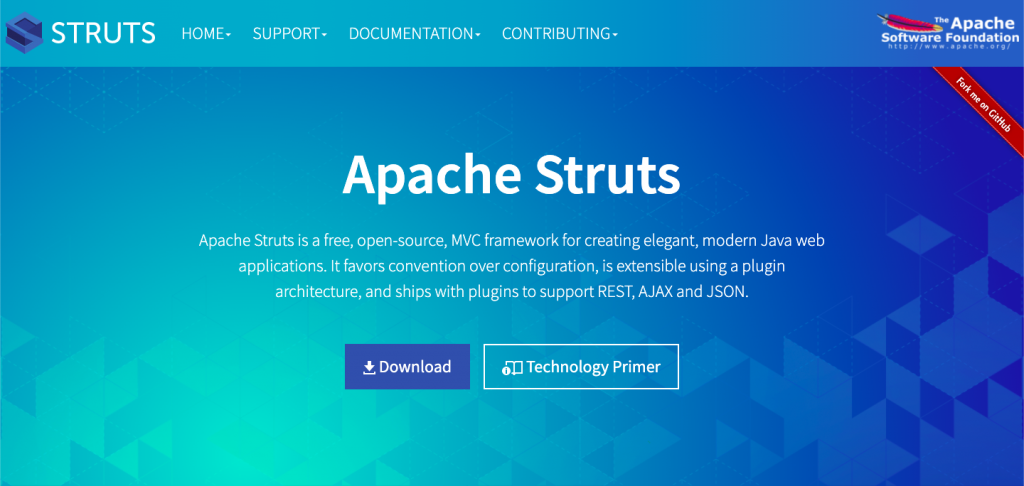
Struts is an enterprise-level framework, maintained by the Apache Software Foundation (ASF). This fully-featured Java web application framework that allows the developers to build an easy-to-maintain Java application. This framework documentation is written for active web developers and assumes a working knowledge about how Java web applications are created.
There are two versions. Struts 1 and Struts 2. Struts 2 is a mixture of the webwork framework of OpenSymphony and Struts 1. But all the companies prefer using Struts 2 because it is the upgraded version of Apache Struts.
The major companies that use Struts framework for application development, we have- Infosys, Accenture, NexGen Technologies, etc.
Advantages of Struts are as follows:
- This framework documentation is written for active web developers and assumes a working knowledge about how Java web apps are created.
- Reduces the development time and makes the manageability of the application easier.
- It offers Centralized Configuration i.e., rather than coding information into Java programs, many Struts values are represented in XML or property files.
- You can integrate Struts with other Java frameworks to perform tasks that are not built on the platform.
Tapestry
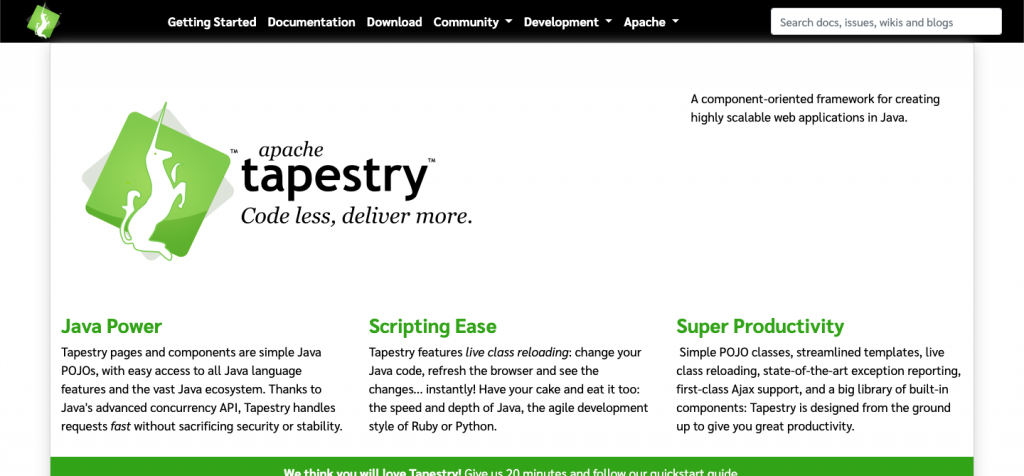
Tapestry is a component-based Java framework with which one can create scalable web applications. Its focus on reusable components makes it architecturally similar to JavaServer Faces and the Wicket framework. Just like Struts, Tapestry is also a project of the Apache Software Foundation.
Advantages of Tapestry are as follows:
- Line precise error reporting.
- A complex web UI can be developed.
- Coarse-grained pooling strategy.
- Eliminates writing servlets, building URLs, and query parameters to servlets.
Vaadin

It is a web application framework which mainly works on UX accessibility. It provides you with a platform for streamlined Java development. Vaadin also allows you to create web applications of customizable components.
Vaadin 10 approaches web app development in an entirely new way. It gives you direct access to the DOM from the Java Virtual Machine. With the new release, the Vaadin team split the previously monolithic framework into 2 parts. It also has a light-weighted Java framework called Vaadin Flow that handles routing and server-client communication.
Advantages of Vaadin are as follows:
- Automatic server-client communication with WebSocket support.
- Use Java or HTML for building views.
- Router with the nested route and parameter support.
- Supports JVM languages like Kotlin and Scala.
- Built-in Spring support.
JavaServer Faces (JSF)

Developed by Oracle, JSF is a component-based framework for building the UI for web applications. Despite the similarities, the contrast to JSP is that JSF is an XML document that represents formal components in a logical tree. The framework encapsulates the entire front-end development technologies like HTML, CSS, JavaScript, making it easier to develop client-side without much interaction with these technologies. Yet again, JSF is another framework that implements MVC pattern, aiding to faster development processes.
Advantages of JSF are as follows:
- JSF is an integral part of Java EE.
- It provides excellent tools and rich libraries.
- It allows existing backend Java code to be extended with a web interface without having to change the base application by introducing a new framework.
MyBatis
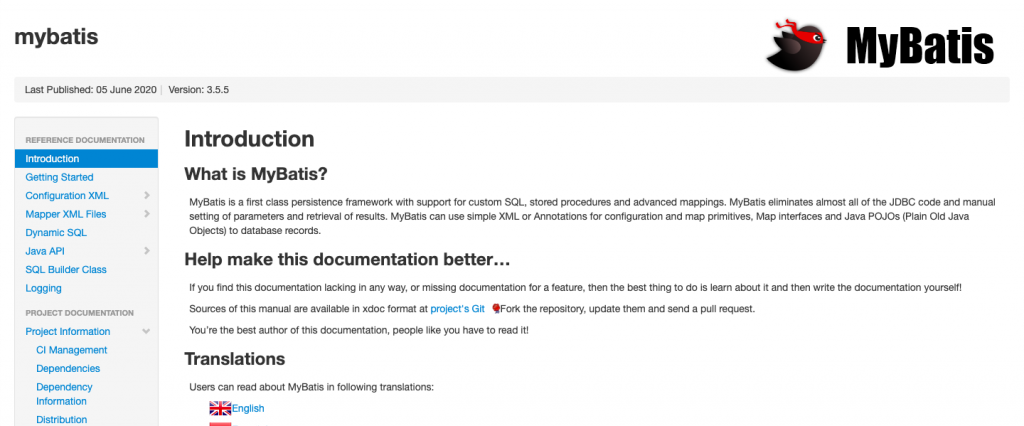
MyBatis is a so-called persistence framework for Java applications, that makes it easier and faster to work with relational (SQL) databases. The framework acts as a middleware between the application and the database and fixes the issues stemming from their different architecture.
You can think of MyBatis as a layer of abstraction between the Java code of your application and the underlying SQL database. By default, you need to use the JDBC (Java Database Connectivity) API to access data sources like relational databases or spreadsheets from your Java code. MyBatis simplifies this process and lets you interact with relational databases with much less code. For instance, you can execute SQL statements with just a single line of code.
Advantages of MyBatis are as follows:
- Aims to improve the communication between the application layer and the database.
- MyBatis provides features for dynamic building SQL queries based on parameters.
- It is free and open-source software.
- MyBatis does all it can to facilitate hyper-fast development.
Play
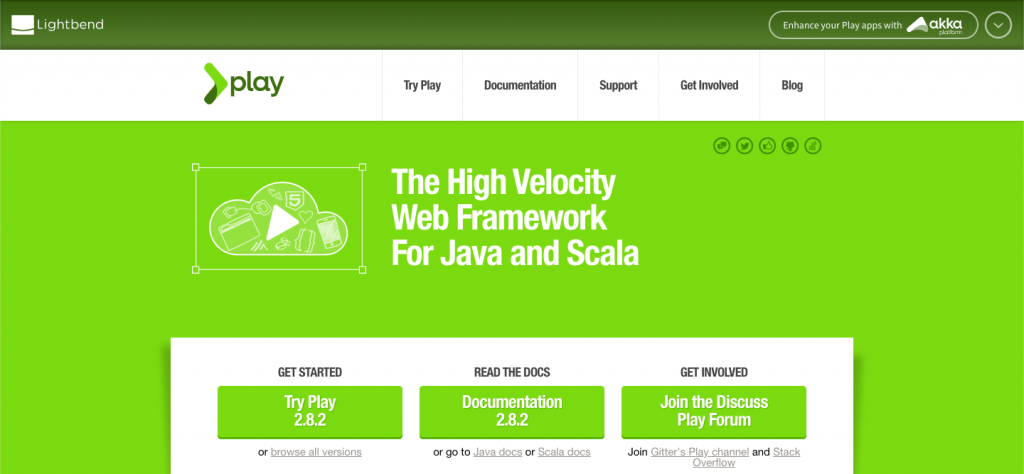
Play is a reactive web and mobile framework for highly scalable Java applications. It makes it possible to develop light-weighted and web-friendly Java and Scala applications for desktop and mobile interfaces. It is often compared with powerful frameworks of other languages, such as Ruby on Rails for Ruby, or Django for Python.
Play is a unique Java framework as it does not rely on the Java EE standards. Instead, it intends to remove all the inconveniences of traditional Java web development like slow development cycles, a lot of configuration, and so on.
Built upon Akka Toolkit, the Play framework truncates the creation of concurrent and distributed applications on the Java Virtual Machine.
Advantages of Play are as follows:
- Offers features like hot code reloading, convention over configuration, and error messages in the browser.
- It supports non-blocking I/O which is crucial for high-performance applications.
- More flexible and failure-tolerant results.
Wicket
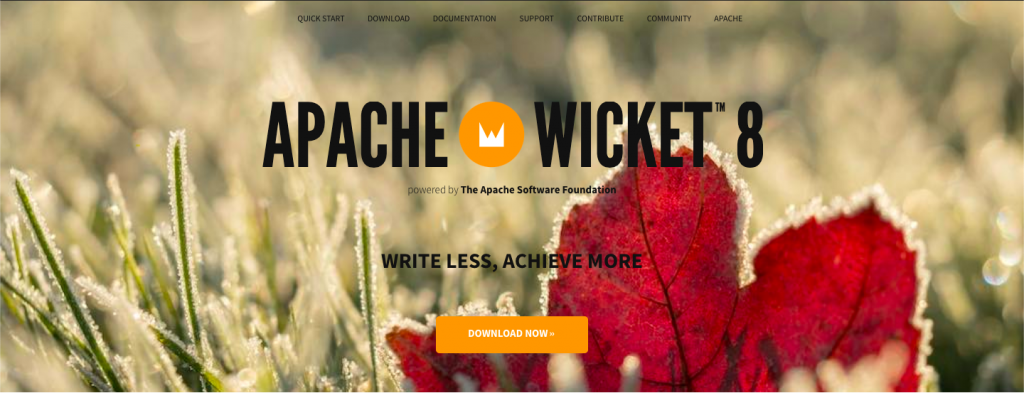
Wicket is a component-based web application java frameworks like JavaServer Faces and Tapestry. It allows you to write elegant, user-friendly applications using pure Java and HTML code. This java framework is maintained by the Apache Software Foundation, just like Struts and Tapestry.
As Wicket is one of the best component-based java frameworks, Wicket applications are made up of reusable pages and components such as images, buttons, links, forms, and others. Programming Wicket application centres around POJOs, therefore components are also ordinary Java objects with object-oriented features such as encapsulation and inheritance. Components are bundled as reusable packages, so you can add custom CSS and JavaScript to them.
Advantages of Wicket are as follows:
- Wicket lets you internationalize your applications, pages, and components by providing out-of-the-box support for 25+ languages.
- Its built-in Ajax functionality allows you to update parts of your page in real-time, without requiring you to write any JavaScript code.
- Wicket focuses on secure URL handling.

